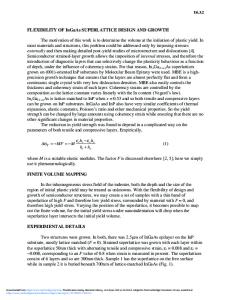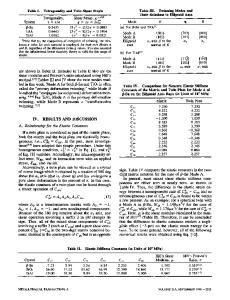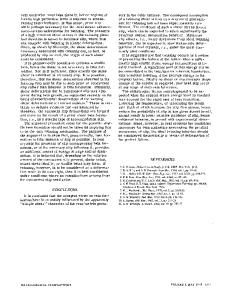Deformation twinning in superlattice structures
- PDF / 379,297 Bytes
- 5 Pages / 593.28 x 841.68 pts Page_size
- 71 Downloads / 537 Views
I. INTRODUCTION Ordered intermetallic compounds are generally known to possess high strength at elevated temperatures due to the low atomic mobility and poor ductility in a polycrystalline form because of an insufficient number of deformation modes and/or weak grain boundaries.' In cubic crystal structures, the crystallography of slip modes available in the ordered superlattice structures (e.g., Ll 2 or B2, B32, DO3, L2! structure type) is the same as those in the disordered base structure (i.e., fee or bcc). Therefore, it is not the number of slip modes, but the larger repeat distances in ordered structures, the complexity of the dissociation configuration of superdislocations, and their reduced mobility that are the principal sources for the high strength and low ductility of ordered intermetallic alloys.2 It is commonly believed that deformation twinning becomes the prevalent mode only at high strain rates and/or low temperatures. In ordered intermetallic alloys, however, deformation twinning makes many important contributions to mechanical properties of both cubic and noncubic structures even at high temperatures,3'4 e.g., Ll 2 (Refs. 5-8), B2 (Refs. 9-10), DO 3 (Refs. 11-12), Ll 0 (Ref. 13), DO22 (Refs. 14-16), and DO19 (Refs. 16-17) structures. Though it is one of the two principal modes of plastic deformation, the energetic and kinetic aspects of the role deformation twinning plays in strength and ductility of ordered intermetallic alloys have not been investigated adequately. The purpose of this note is to identify the conjugate relationships between the complementary twin systems (or anti-twinning) and the secondary slip systems which become the primary slip modes at high temperatures. The crystallographic correlation analyses are made for both cubic and noncubic ordered superlattice structures. Specific examples of twinning and anti-twinning in elastically anisotropic crystals are discussed in terms of energetics and kinetics of the motion of superpartials. The implications of the conjugate relationships on high temperature deformation and fracture are discussed. 50
http://journals.cambridge.org
II. CRYSTALLOGRAPHY OF CONJUGATE RELATIONSHIPS The crystallography of twinning in fee- and bec-based superlattice structures has been discussed by Arunachalam and Sargent18 and Christian and Laughlin" on the basis of the theory of deformation twinning by Bilby-Crocker 20 and Bevis-Crocker.21'22 We are concerned only with compound twin modes which give a small twinning shear, g =£ V 2 . The crystallographic elements, Ku K2, •»),, r\2, and S, and the parameters of q and g are listed for cubic and noncubic ordered structures in Tables I and II, respectively. In this paper, the Miller-Bravis indices for the crystallographic elements in an ordered crystal structure are referred to the crystal structure of the corresponding disordered state (fee for Ll 2 , Ll 0 , and DO22; bcc for B2, B32, DO3, and L2,; and hep for DO,9). The S is normal to the plane of shear, and q is an integer such that some atomic shuffling is nec
Data Loading...











